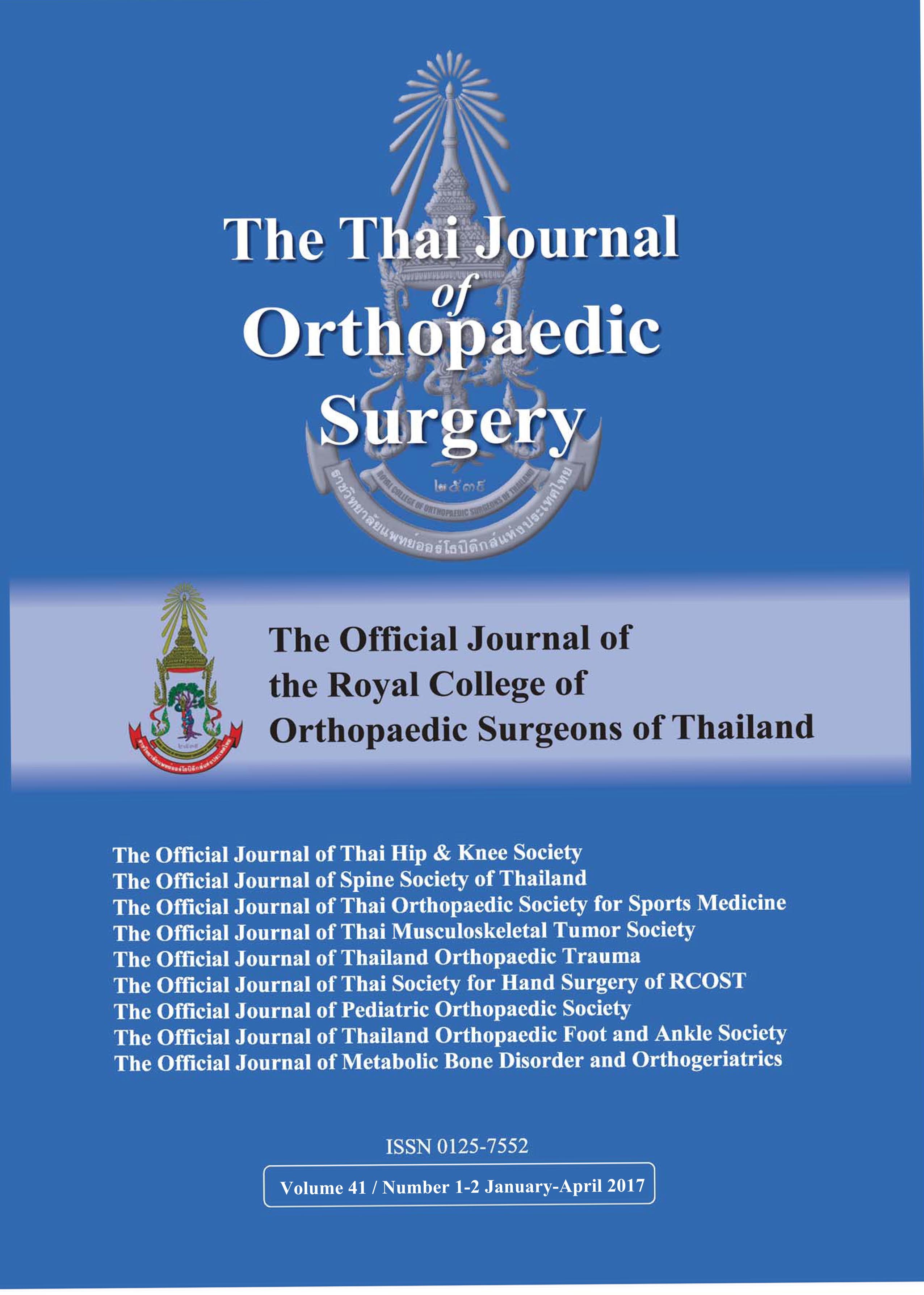Fall and Falling Fractures in the Elderly Men
Main Article Content
Abstract
Falling fracture was a common problems in elderly. This presentation aimed to identify the factors of fall and falling fracture, especially in the elderly men. The retrospective case-control study was designed. Populations from the participants of falling fracture prevention programs in Lamphun province by the year 2012 were selected. Samples were all 65 years old and above men who experienced fall within 1 year. Factors included age, body mass index, underlying diseases, chronic drugs used, history of parent fracture, steroid used, visual aquity and time up and go test were studied. Multivariate regression analysis was used. 463 cases of fall and 101 cases of falling fracture were found. Significant factors of fall in the elderly men included age, underlying diseases, history of parent fracture, steroid used, impaired visual aquity and prolong time up and go test. Significant factors of fall with fractures was only history of parent fracture. Falling fracture in the elderly men were not be influenced by intrinsic factors.
Article Details
References
2. Vaseenon T, Luevitoonvechkij S, Wongtriratanachai P, Rojanasthien S. Long-term mortality after osteoporotic hip fracture in Chiang Mai, Thailand. J Clin Densitom 2010; 13: 63-7.
3. Oliver D, Daly F, Martin FC, McMurdo ME. Risk factors and risk assessment tools for falls in hospital in-patients: a systematic review. Age Ageing 2004; 33: 122-30.
4. Kanis JA, Burlet N, Cooper C, Delmas PD, Reginster JY, Borgstrom F, et al. European guidance for the diagnosis and management of osteoporosis in postmenopausal women. Osteoporos Int 2008; 19: 399-428.
5. Kantayaporn C. Fall with and without fracture in elderly: What’s difference?. J Med Assoc Thai 2012; 95: 109-12.
6. Shumway-Cook A, Brauer S, Woollacott M. Predicting the probability for falls in community-dwelling older adults using the Timed Up & Go Test. Phys Ther 2000; 80: 896-903.
7. National Statistical Office, Ministry of Information and Communication Technology. Number of the elderly by fell and number of fell during 6 months before interview’s date, place of last fell, age group, sex and area. Report on the 2007 survey of the older persons in Thailand. Bangkok: National Statistical Office; 2007.
8. Rubenstien LZ. Falls in older people: epidemiology, risk factors and strategies for prevention. Age Ageing 2006; 35 Suppl 2: ii37-ii41.
9. Lee S, Lee C, Rodiek S. Neighborhood factors and fall-related injuries among older adults seen by emergency medical service providers. Int J Environ Res Public Health 2017; 14.
10. Nicklett EJ, Lohman MC, Smith ML. Neighborhood environment and falls among community-dwelling older adults. Int J Environ Res Public Health 2017; 14: 175.
11. Yamauchi M, Sugimoto T. Clinical characteristics of male osteoporosis. Clin Calcium 2016; 26: 973-9.
12. Rubenstein LZ, Robbins AS, Josephson KR, Schulman BL, Osterweil D. The value of assessing falls in an elderly population. A randomized clinical trial. Ann Intern Med 1990; 113: 308-16.
13. Gates S, Fisher JD, Cooke MW, Carter YH, Lamb SE. Multifactorial assessment and targeted intervention for preventing falls and injuries among older people in community and emergency care settings: systematic review and meta-analysis. BMJ 2008; 336: 130-3.
14. Campbell AJ, Robertson MC. Rethinking individual and community fall prevention strategies: a meta-regression comparing single and multifactorial interventions. Age Ageing 2007; 36: 656-62.


